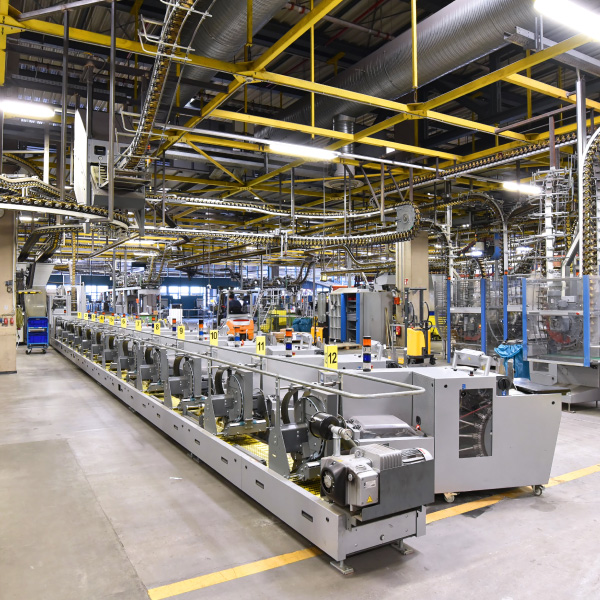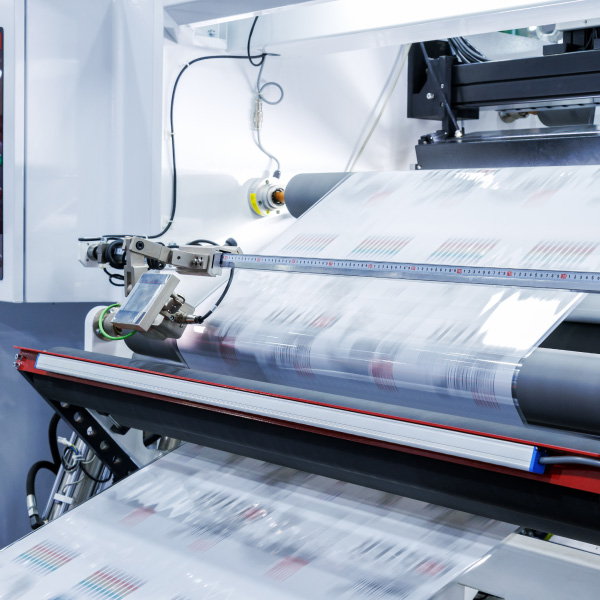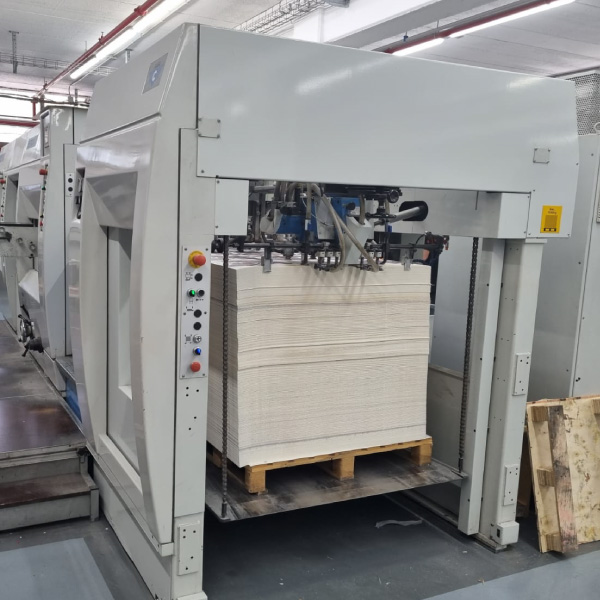Automation and robotics have revolutionized numerous industries, and the printing sector is no exception. As businesses strive for greater efficiency, higher precision, and cost-effectiveness, the integration of these advanced technologies has become crucial. Once dominated by manual labor and mechanical processes, the printing industry is now leveraging automation and robotics to streamline production, improve quality, and reduce operational costs. From sensors to vacuum solutions, pneumatic products to compressors, a wide range of automation technologies are being used in printing facilities globally.



How Automation and Robotics Improve the Printing Industry
1. Increased Efficiency and Speed
Automation and robotics enhance the speed of production, which is critical in high-volume printing environments such as commercial printing, packaging, and label production. Automated presses, digital workflows, and robotic systems help print operators process orders faster and with greater accuracy. Automated loading, unloading, and material handling systems minimize manual intervention, significantly reducing downtime and increasing overall productivity.
2. Enhanced Precision and Quality Control
Precision is essential in printing, whether it’s for commercial, industrial, or packaging applications. Robotic systems equipped with advanced sensors and cameras can monitor every stage of the printing process, ensuring perfect alignment, color consistency, and print quality. Automation also enables continuous monitoring, where robots make real-time adjustments to parameters like ink levels and drying times, ensuring minimal errors and consistent output.
3. Reduced Labor Costs and Human Error
By automating repetitive tasks, companies in the printing industry can significantly reduce labor costs. Robots handle material transportation, alignment, stacking, and packing, eliminating the risk of human error that often results in defective prints or equipment breakdowns. This shift allows employees to focus on more complex, creative, or strategic tasks.
4. Energy Efficiency and Sustainability
Modern automation systems often incorporate energy-saving technologies. Compressors, sensors, and pneumatic systems that operate only when needed help reduce energy consumption, which is particularly important in large-scale printing operations. These systems contribute to a more sustainable operation by minimizing waste, optimizing material usage, and lowering the carbon footprint of printing facilities.
Real-World Applications of Automation in the Printing Industry
1. Robotic Arms for Material Handling
In many large printing facilities, robotic arms are used to handle heavy rolls of paper, film, or other materials. For example, Heidelberg, one of the world’s largest printing machine manufacturers, incorporates robotic solutions for material handling in their high-end printing presses. These robotic arms can load rolls of paper, align them precisely, and ensure uninterrupted operation without human intervention.
2. Automated Printing Presses
Companies like Xerox and HP have developed fully automated digital printing presses that can manage entire printing jobs, from receiving digital files to delivering finished products. These presses can automatically adjust print settings, ensuring high-quality output without manual input.
3. Labeling and Packaging Automation
In the packaging sector, robots are used for precision labeling and die-cutting. For instance, Bobst, a global leader in packaging and label printing machines, uses automation for precise material handling and cutting, ensuring the accurate production of labels, cartons, and other packaging materials.
4. Inkjet Printing and Large-Format Production
Large-format printers used in the signage and display industry are incorporating robotics for automatic media feeding and print finishing. Companies like Durst and EFI provide large-format printing systems with automated workflows, enabling higher print speeds and improved media handling, ensuring fewer errors during the production of billboards, posters, and vehicle wraps.
Products Used in Printing Automation
Several key components are critical in integrating automation into printing operations:
1. Vacuum Solutions
Vacuum systems play a vital role in material handling during the printing process, especially when dealing with thin substrates like paper, plastic film, or textiles. Vacuum conveyors can be used to transfer sheets or rolls of material through different stages of production, such as printing, cutting, and stacking. Piab’s vacuum technology is often used in automated print production lines to handle delicate or heavy media without causing damage.
2. Sensors
Advanced sensors are essential for monitoring various parameters in the printing process. From color sensors that ensure accurate hues to proximity sensors that control the alignment of media, automation systems rely heavily on real-time feedback. For instance, Sick and Balluff manufacture sensors that are frequently used in printing presses for alignment and quality control.
3. Pneumatic Products
Pneumatic actuators, valves, and cylinders are commonly used in printing machines for tasks such as positioning, clamping, and material transfer. Festo and SMC are two leading manufacturers providing pneumatic solutions tailored for the printing industry. These components allow for smooth, precise, and fast motion control, which is critical in high-speed printing operations.
4. Compressors
Air compressors are widely used in printing operations to power pneumatic tools, presses, and robotic systems. These compressors must be reliable and energy-efficient, as they often run continuously during production. Kaeser and Atlas Copco are well-known for their industrial compressors that support pneumatic systems in automated printing lines, providing clean, dry air that ensures the longevity and efficiency of the equipment.
5. Automated Sorting and Stacking Systems
Automation also plays a significant role in post-printing processes, such as sorting, binding, or packaging. Companies like Müller Martini offer automated stacking and binding systems, which eliminate bottlenecks and reduce labor costs in bookbinding and magazine production.
Future of Automation in the Printing Industry
The future of automation and robotics in the printing industry is bright, with continued advances expected in areas like artificial intelligence, predictive maintenance, and integration with the Internet of Things (IoT). AI-driven systems will allow printing presses to optimize their settings dynamically, predicting potential issues and resolving them before they result in downtime. IoT integration will facilitate real-time data sharing between machines and operators, improving decision-making and further reducing human intervention.
Automation and robotics are transforming the printing industry by improving efficiency, precision, and cost-effectiveness. From robotic arms for material handling to vacuum solutions, sensors, and compressors, these technologies are streamlining every stage of the production process. As the industry continues to embrace these innovations, companies that invest in automation will not only enhance their operational capabilities but also position themselves for long-term success in a competitive marketplace.




